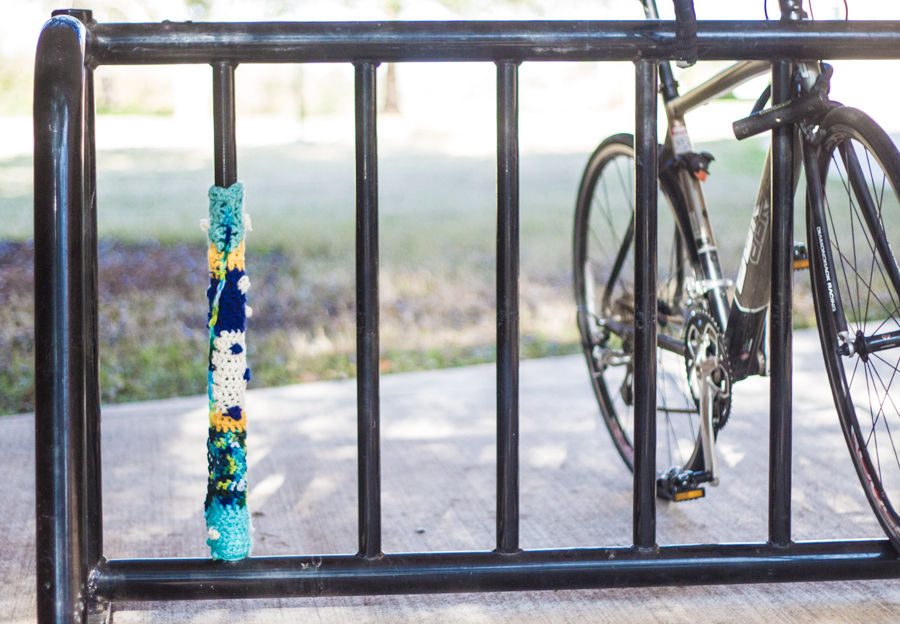Art class crochets splashes of color to campus
When people think of graffiti, many picture spray painted murals or letters, something usually associated with vandalism.
Graffiti can also be artful, bringing design and splashes of color to otherwise drab surroundings.
In Professor Margita Pencevova’s Artist’s Sketchbook classes, graffiti takes on a less permanent presence in the form of crochet.
Pencevova began the crochet graffiti project by teaching students the art form through class instruction and study of local yarn artist Magda Sayeg.
Students were instructed to seek out man-made objects that weren’t aesthetically pleasing and bring some beauty to them by “tagging” them with their crochet pieces.
Along with learning to crochet, students had to design their projects and plan on how to deploy them effectively. Pencevova stressed that the crochet must be placed respectfully and safely, making sure that the functionality of any of the graffiti sites remains intact.
Initially, some of the students were hesitant at the prospect of learning crochet.
“A lot of us were dreading it at first, but toward the end we started to like it,” Rhea Kavina said. “I hope that when people pass by my yarn graffiti they like it or appreciate it.”
The goal of the project was to promote awareness, not just of the areas tagged by students, but to the interconnectedness of everything around them.
“It made me notice other things … just walking around after doing crochet, you notice the pretty things, things that are there you pay more attention to,” Eduardo Escobar said.
Pencevova explained that crochet is an excellent way to get students to slow down and focus so the eye can learn to see differently.
By building students’ hand-eye coordination, crochet lays the foundation for other projects which the students, none of whom are art majors, will take on as the semester continues.
Growing up in Czechoslovakia under communism, Pencevova’s family owned and worked sheep.
She recalled shearing the sheep for their wool which was then taken through the processes of washing, cleaning, carding and ultimately being spun. Pencevova’s grandmother would operate a loom to create intricate “kilim,” a traditional type of rug.
This was Pencevova’s inspiration for bringing crochet into the classroom.
While working to assist students in their graffiti, Pencevova found inspiration in her students’ artwork to create some of her own crochet in the form of “martenichki,” traditional red and white figures made in Bulgaria during the celebration of spring called “Baba Marta.”
While her classes have now moved on to a new medium, the effect of the crochet on the class remains.
“Now, when you see something that’s crocheted, you can really appreciate the time it took to make it,” Aleida Perez said.







